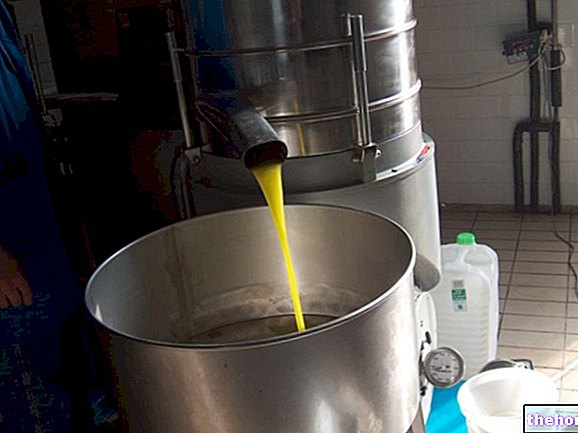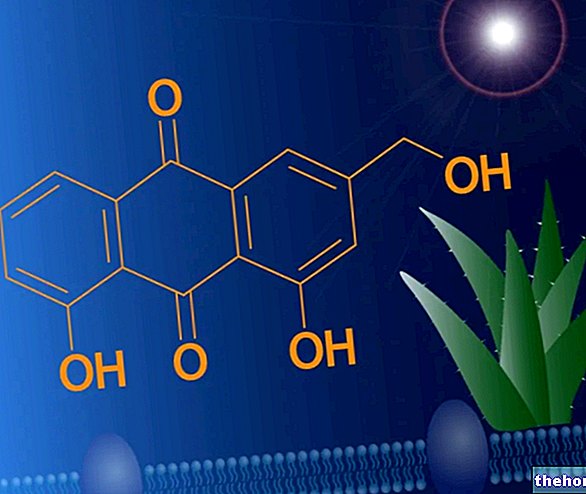Glycoside drugs can generally be classified on the basis of the aglycone (non-sugary part of the molecule) or on the basis of their activities: if cardioactive, saponins, etc.
- Cardioactive glycoside drugs: Digital, important to know because it is used in various strictly pharmaceutical products; furthermore, other drugs can have interactions with digitalis-based therapies, so they cannot be administered simultaneously. For example, the Hawthorn has digitalis-like activities, so its action would overlap with the digitalis, sending the heart muscle into crisis.
- Anthraquinone glycoside drugs: molecules, via malonate, which derive directly from a folding of a polypeptide chain. Rhubarb, Senna, Aloe.
- Saponin glycoside drugs: where the saponins have foaming properties in aqueous solution; they are molecules that derive directly from the biogenetic pathway of mevalonic acid, because they have a steroidal or triterpene aglyconic nucleus; in fact, we speak of steroid saponins or triterpene saponins. Saponins are rather widespread active principles and also have very diversified properties: Ginseng, saponins with adaptogenic properties, licorice, expectorant, antiulcerogenic saponins etc.
They are saponins characterized by certain types of chemical-physical properties to determine a persistent foam in aqueous solution, but often have different functions. - Cyanogenic glycoside drugs: they are glycosides that determine the generation of hydrogen cyanide; they have interactive properties with the central nervous system, in particular with the bulb, that region of the CNS that interacts with breathing and heart function. Generally, cyanogenic glycosides have analeptic properties (they stimulate the central nervous system), but are also used for their disinfectant and expectorant properties. These are the substances that determine the so-called bitter almond flavor, typical of Prunoidee.
- Glucosinated glycosides drugs: glycosides that release sulfur compounds, typical of Liliaceae, such as Garlic, Onion and Mustard.
When we talk about cardioactive, anthraquinone and saponin glycosides, we are referring to the metabolic pathway of acetate, while when we talk about cyanogenic glycosides and glucosinates we are referring to molecules that originate from amino acids; in fact, cyanogenic glycosides derive from compounds that present nitrogen (acid hydrogen cyanide CN), the same is true for glucosinates, which have sulfur instead of nitrogen and derive from primary metabolites, in particular an amino acid.
- Phenolic glycoside drugs: Uva ursina, compounds with direct derivation from schichimic acid.
- Drugs with coumarin glycosides: biogenetic pathway of scichimic acid, where among the drugs rich in these active principles we find horse chestnut and bergamot.
- Drugs with flavone glycosides and anthocyanins: flavones and anthocyanins are molecules with a similar structure C6-C3-C6, which is why they can be considered in the same group. They belong to the large family of flavonoid molecules, ubiquitous because from an evolutionary and biological point of view they have an extremely ancient genesis, so much so that the biogenetic pathways that characterize them are considered to be among the first developed in the plant world. Being, therefore, ubiquitous, it will often be talked about, especially for drugs such as blueberry, mallow (anthocyanins), milk thistle (flavonoids). Flavonoids are molecules that have diversified properties, ranging from the antioxidant to the hepato-protective one.
- Tannin glycoside drugs: tannins derived from Gallic acid or tannins derived from the condensation of catechinic units. They are quite common compounds, in particular present in Witch Hazel, but also in Walnut and Bearberry.
In the classification of glycosides, all the biogenetic metabolic pathways are embraced, from that of acetate, to that of amino acids, to that of scichimic acid. This category of secondary metabolites, however, lacks some other categories, first of all that of the ALKALOIDS, to be treated separately for their diffusion, for their quantity and importance from the functional point of view. There are also other compounds, of secondary importance for their health function, but still present: beta-cyanic compounds (molecules that contain nitrogen).
Other articles on "Types of glycosides"
- Via del Mevalonato
- Pharmacognosy
- Cardiac glycosides




























